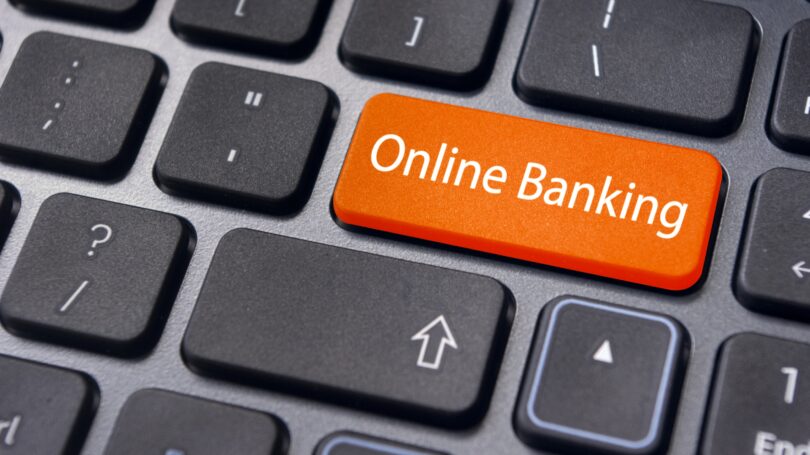I remember watching my mom pay bills each month when I was a child. She’d sit at the kitchen table, surrounded by a mound of paper, envelopes, stamps, and her checkbook as she wrote out the amounts, balanced the budget, and kept all of those slips of papers and bills in a huge folder.
Today, that amount of paperwork would make me shudder. At the beginning of the month, I routinely sit down to make my regular payments: the gas bill, health insurance, Internet, and whatever else. The difference? I do it with a few clicks online.
Technology has revolutionized the way we address our finances. Unfortunately, if you don’t know what assets, apps, and services are available to you, you might still be doing things the old-fashioned way. But working to streamline your finances means simplifying your personal budget, payments, and savings so they’re easier to manage. With a few clicks of a mouse or a swipe of the finger, you could be on your way to simpler finances and doing a better job managing your money.
Streamlining Your Finances
Simplifying your finances doesn’t automatically mean cutting back – though it might not be a bad idea. Instead, it means making the process of budgeting, paying, and saving easier on you by ditching the mounds of paperwork or swapping payment methods to something more convenient. The idea is that when finances are more convenient and simplified, it’s easier to manage your money overall. You’re more likely to check your bank balance on your phone rather than going to a bank machine to do the same, and making financial management easier brings a new element of awareness and control to what you spend and save.
1. Go Paperless
I can become overwhelmed each month when I see the parade of bills start making their way into my mailbox. Whether it’s the cable bill or a healthcare invoice, it’s not uncommon for me to put the unopened bills to the side so I can get to them later. Of course, this can lead to an “out of sight, out of mind” attitude, and I’ve incurred many late fees because of it.
Now, I go paperless whenever possible. Since I can usually pay bills directly from my mobile phone or computer, it’s a lot easier for me to make a few clicks and pay as soon as the bill hits my email. That way, I’m not shoving it to the side for a later date and forgetting due dates.
Many utilities and bills have options to go paperless. Sign onto your online accounts and see if there’s an option that you can click to have your bills sent to your email, rather than your mailbox. Then, follow the prompts directly within the email to quickly pay the bills without any extra muss or fuss. As an added bonus, at tax time, it’s a lot easier to log into your various accounts for a quick statement, rather than paging through a stack of bills to get an accurate idea of what you’ve spent.
2. Sign Up for Online Banking
In a 2011 report, analytics firm comScore found that 74% of bank cardholders were going online to complete banking transactions. And why not? Online banking makes life easier: You can complete transactions online that once required a trip to your bank. Whether it’s transferring money, checking your account balance, or paying bills, there’s no need to make a special trip, which saves major time and money. Like signing up for paperless billing with your utilities, online banking reduces the need for mailed correspondence and in-person transactions.
One of the other major benefits to signing up for your bank’s online banking services is the instant access you have to your money. While you can’t withdrawal or deposit cash, you can quickly check to make sure that a payment has cleared or to see if your budgeting numbers are accurate. That access alone can help streamline your finances so you always have up-to-date information about your money, anytime you need it.
With many banks, you need to sign up for your online services. It’s usually a simple online process that requires your bank account number, confirmation that you’re the owner of the account (my bank utilizes a PIN number system), and setting up a username and password for easy access in the future.

3. Utilize Apps
My smartphone is my greatest tool when it comes to streamlining my finance, and I’m not the only one: comScore found that 59% of bank cardholders utilized their mobile phones for the majority of their banking transactions. And why not? With features like mobile check deposit, account transfers, and bill pay all on a handy app, you gain quick access to features that are usually available online, such as:
- Checking your balance
- Account transfers
- Mobile check deposit
- Bill pay
- A list of transactions
- Budgeting tools
- Fund transfers to other account holders who bank with the same institution
Check to see if your bank has an available app. The available features may vary, but many banks and credit unions offer some functionality via apps. I bank with a local credit union, and they have an excellent, full-featured app that does just about everything that a bank teller could.
Other apps can also be used as tools to help you streamline your finances and more conveniently manage your money. Here are a few favorites:
- Mint (Free, iOS, Android, Windows): A do-it-all management app. Link Mint with all of your various bank accounts so you can check balances and see purchases all in one place. Mint also offers a budgeting tool, so you can set what you’d like to spend for various categories and see how you’re doing in real-time.
- Check (Free, iOS, Android, Windows): If you tend to struggle to remember when bills are due, try Check. Input all of your various accounts, bills, and other applicable information, and Check reminds you when bills are due. Furthermore, you can pay your bills directly from the app. It simplifies the process so you’re not gathering bills or remembering the information for six or seven different accounts at once.
- DebtTracker Pro ($1.99, iOS, Android): Seeing a number of debts and their balances can definitely make paying off those debts feel overwhelming. DebtTracker Pro helps you take control of those debts by entering in your balances and interest rates and then planning payoff based on your specifications, such as paying off high interest debt first. It’s a lot easier to gain control of those debts when you can clearly see the steps you need to take, and how long you’ll be paying on a specific loan.
4. Automate Your Payments
Whenever possible, I set up automated payments for the accounts that remain consistent from month-to-month. For example, my city bill is constantly the same amount, so instead of logging into my account and paying manually each month, I have my account set so the amount is automatically debited. And you don’t have to wait until a utility or creditor offers the option, as many banks allow you to set up your own auto pay rules within your account so that the amount is sent electronically or via check to your chosen service provider.
While it’s possible to auto pay accounts that vary from month to month, I prefer to pay those manually so I can adjust my budget accordingly. If my electric bill is higher than usual, I like to see and pay it so I can scale back elsewhere to make up for the extra amount.
Just remember that using auto pay doesn’t mean that you should ignore payments. It’s still important to check your transactions and bills to make sure they’re being paid for the correct amount and on-time.

5. Consolidate or Eliminate Accounts
You may feel that you have too many open accounts, too many payments to make, and too much account maintenance to complete. Streamlining your accounts is an excellent way to “spring clean” your regular payments, accounts, and utilities so you have a simplified path to money management.
Take stock of your regular monthly bills. You might find that some aren’t as necessary as others. While you definitely have to pay gas or electric, are you making things more complicated by also paying for a DVD subscription account, pricey satellite package, or an online video service? Whenever possible, consolidate or eliminate accounts. For example, I loved Netflix, but adding the option of video services to my existing Amazon Prime account meant that I could cancel Netflix and only maintain (and pay for) one account.
Also, if you carry multiple credit card accounts, but have one card with a small balance, buckle down and pay it off quickly. That will be one less payment you need to remember.
6. Schedule a Regular Budget Check
A 2013 Gallup poll found that only one in three Americans prepare and maintain a budget. The poll noted that the availability of online banking could account for some individuals negating the need for a regular budget, but pointed out that regardless, a regular budget makes good financial sense.
Hopefully, you already have a budget in place. But simply drawing up the numbers once isn’t good enough to keep your finances in order. You need to regularly check up on your budget to make sure your numbers are correct and to allow for necessary adjustments due to unplanned expenses, vacations, and other incidentals. Not balancing your budget on a regular basis can result in disorganized finances.
Schedule a monthly budget checkup. The following takes only about 20 minutes:
- Gather the month’s bills.
- Log onto your online banking account.
- Scroll through your account to make sure payments match bills, and to look for any incorrect or suspicious charges.
- Discuss the next month’s activities and expenses with your spouse or partner. (Are we saving for a vacation? Can we pay off that medical bill?)
- Adjust any numbers that require it, such as the electricity bill during the hot summer months.
- Making sure you’re on track for any financial goals you have set.
- Log out.
Taking 20 minutes every month to reconcile a budget is a lot easier than having to wade through bills and expenses once a year because your budget went off the rails. It’s a simple, quick way to make sure you’re on track.

7. Divvy Up Payments
If you’re like many American families, you’re paid biweekly. But chances are that the bulk of your bills are due on the first of the month, which can be a little stressful and create an unbalanced budget. You might find yourself living like paupers during the first two weeks of the month, and then living like kings during the second two.
Balancing your payments is the best way to help keep your budget under control. Many of your bills are due at the first of the month, no questions asked. But if you’re given the opportunity to schedule other payments – such as retirement and charitable contributions – schedule them so they are paid during the second pay period for a more balanced budget.
You can also take advantage of loan grace periods to better space your payments. For example, a car loan often offers a 10- to 15-day grace period where a debtor can pay later without incurring any late fees or other repercussions. This helps reduce some of the “bottle-necking” that can happen when all of your bills are scheduled to be paid at the same time, particularly if you’re paid weekly or on an irregular schedule.
Just be sure to avoid confusing grace periods for different payments. For instance, your home loan might give you 15 days, but your car loan might only have a 10-day grace period, so it’s important to keep these straight to avoid late payments.
Final Word
The problem with getting bogged down with payments, schedules, balances, and transfers is that when you get overwhelmed, you lose motivation to take control of your finances. Instead, your finances start to control you. Why not make the process much easier on yourself by automating and scheduling? By using the tools available to you to make finances simpler and more convenient, you’ll be less stressed about money and personal finance.
What are your favorite ways to simplify your finances?